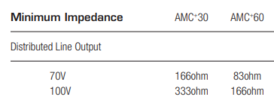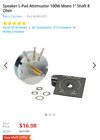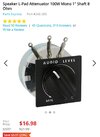I have a 60W PA amp that specifies 166 Ohm impedance at 70V out.
That calculates to only 30W into a 166 ohm impedance.
The spec says the output impedance is 83 ohms for the 60W amp at 70V out.

But if I want to drive a single speaker (at distance) would it be possible for test purposes to simply insert a 200R 100W resistor in series for current limiting? If so, how would this affect the sound quality and wellbeing of the amp?
No, that will not be a valid test, since the resistor will give a much different line current for the same speaker power, than the transformer.
You need to use the transformer.
Instead of using a transformer at each speaker to drop the 70V, can this not be done using series resistance? IOW what is the practical advantage of each speaker having its own step-down transformer?
That won't work.
You will be wasting most of the power in the resistors, leaving little for the speakers.
In contrast, a transformer has high efficiency (likely 80-90%), so most of the power will go to the speakers.
The transformer converts the high-volage, low line current, into the low-volage, high-current the speaker requires.
If you don't want to use a transformer, than use the amp low impedance output to directly drive the speaker (but you will still need a matching transformer volume control if more than two 8 ohm speakers are connected in parallel to the 4 ohm output).
The reason a 70V output is used for long distances, is to reduce the line current, giving lower power waste for a given load power and wire size.
It's similar to why power lines have a much higher operating voltage than your house voltage.
Power is equal to volts times amps.




